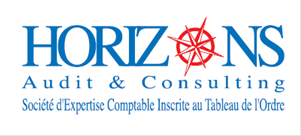Accounting Services
Customer accounting service support
In accounting matters, we provide our clients with several local services, such us:
- Complete bookkeeping
- Customer Accounting Service Support
- Taking charge of the bookkeeping at the client’s premises or in the office
- Outsourcing of accounting in collaboration with foreign cabinets
- Establishment of consolidated accounts
- Compliance with IFRS IAS standards
- Setting up of cost accounting
- Establishment of administrative and accounting procedures
- Some SMEs prefer to focus on their core business, entrusting us with the complete bookkeeping. On the other hand, others have their own accounting department and have recourse to the assistance of our firm according to a periodical intervention frequency.
Our intervention procedure is strongly inspired by the professional French norm NP 2300 applicable to the mission of presentation of the accounts and it is in harmony with the professional standards of the OECT.
The process adopted is as follows:
I / Preliminary phase
A / Acceptance of the mission
We gather a set of preliminary information about the potential customer:
- The manner in which the client had recourse to the firm and the reasons for the change of provider.
- The legal and financial situation of the client
- Reputation with the business community
- Management commitment to good governance rules
- The organization and the customer information system
- The volume and nature of accounting records
- The competence of the financial and accounting staff
Theseinformation will be used to evaluate the following mission acceptance factors:
- The ability to execute the mission
- The independence
- The mastery of professional risk
- Respect for the rules of ethics
B / Signature of a convention
The main purpose of this agreement is to ensure that there is no misunderstanding with the client as to the terms of the assignment. It facilitates the planning of the work and confirms the acceptance (or maintenance) of the mission entrusted to the firm.
The agreement includes in particular:
The nature and purpose of the mission, including the fact that it is neither an audit nor a limited review;
The respective responsibilities of the professional and management in the context of the assignment;
Fee determination mode;
The deliverable documents
The duration of the assignment and the notice periods
II / Execution phase of the mission
A / Acknowledgment of the client
It will be a question of determining the elements that will have an impact on the quality of our work and on the control of the risks related to the accounts; we will collect the following information:
The methods of carrying out the activities of the company: the existence of several sites, subcontracting and contractual commitments.
- Procedures manual or notes
- Industry-specific regulations
- Social and fiscal specificities
- Financial statements of recent years
- Accounting records
- The current chart of accounts
- The justification of balance sheet accounts from one year to the next
- Bank reconciliations
- Physical inventories
- Depreciation tables
B / Work Planning
Work Planning
Establishment of a work program.
Reconciliations and controls to do
C / Intermediate Accounting
The aim is to organize periodic works that can reduce year-end work and provide the necessary information for the preparation of tax and social declarations.
D / Closing of accounts
This is mainly the following work:
- Development of depreciation schedule
- Accounting for valuated inventories
- Accounting for accrued liabilities
- Recognition of provisions for depreciation of obsolete inventories and bad debts
- Stop bank reconciliations
- Recognition of unrealized foreign exchange differences
- Check the consistency of tax and social statements with accounting.
- The justification as of December 31 of the accounts of balance sheets and balances of the thirds
- Establishment of the table of determination of the fiscal result and recording of the charge annual tax
E / Critical analysis before generation of financial statements
It is mainly to make an evaluation and a critical analyst of the following elements:
- Gross profit
- Gross operating income
- Changes in inventory levels in relation to activity
- The level of depreciation charges
- The tax result
- Structure ratios



